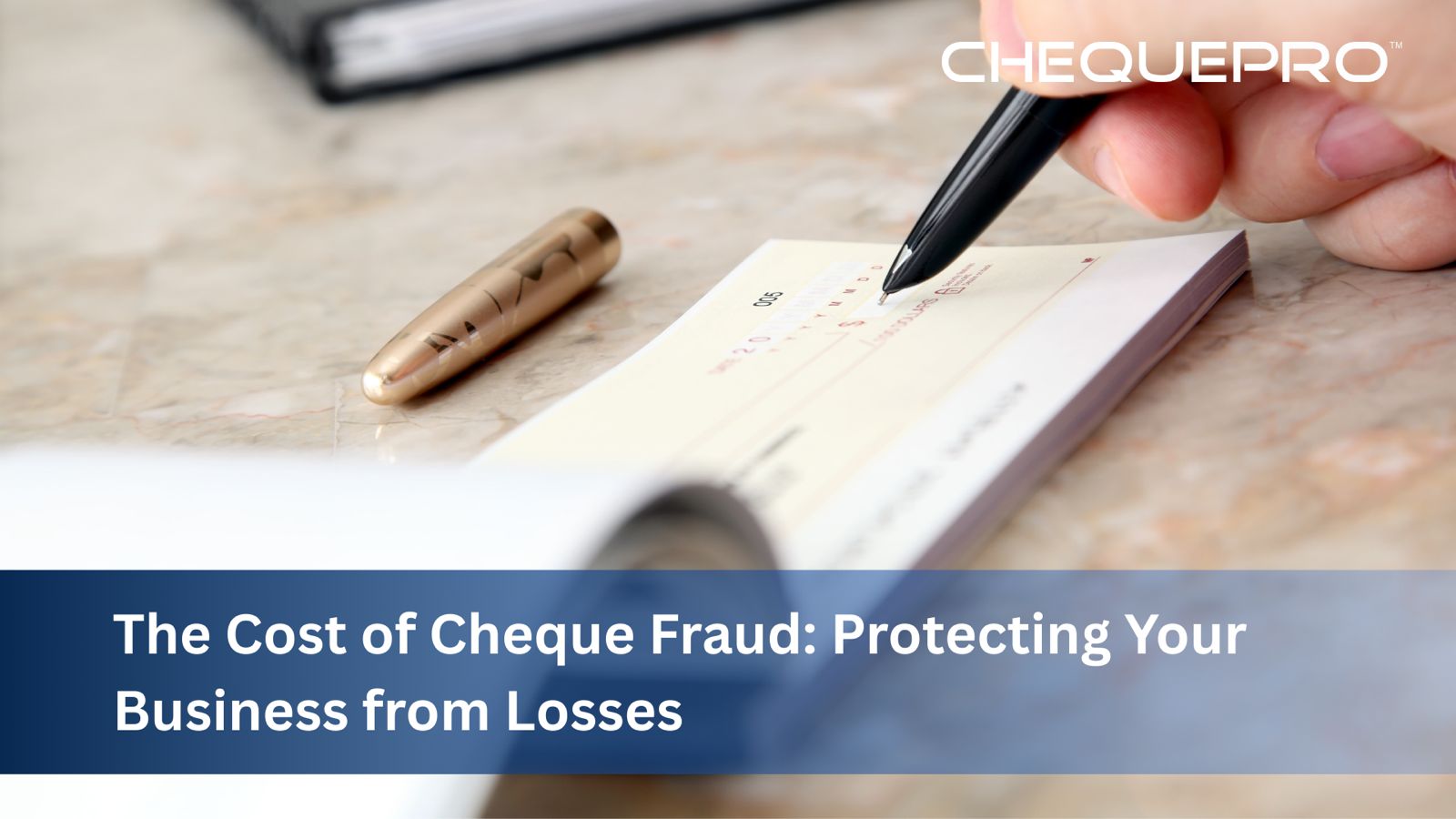Introduction
Cheque fraud has evolved into a sophisticated criminal enterprise that threatens businesses of all sizes. In a survey by the Association for Financial Professionals in 2025, I found out that nearly two-thirds of organisations were hit by attempted cheque fraud in the previous year.
Even more surprising, about three-quarters still issue cheques, and most don’t plan to quit anytime soon. So it is clear that cheques are not disappearing anytime soon.
Now if cheques remain in circulation, so will the cheque fraud because of them being an easy target for fraudsters. The question here is how do you make your business less of an easy target?
Losses Because of Cheque Fraud
I have heard some horrific stories regarding cheque fraud, like a small business one day discovered $80,000 gone after a forged cheque slipped through, or a nonprofit saw its donor funds rerouted overnight.
And it’s not just the stolen cash. Because after the fraud, the investigations, compliance reports, and endless calls with the bank, those can cost several times the actual fraud amount.
And the worst part is that recovery rates aren’t great. One report suggested that only about one in five organisations manage to claw back most of what they lose. That makes prevention, though sometimes tedious, far less expensive than the clean-up job.
Also Read: ChequePRO Bulk Printing Software: Print Hundreds of Cheques in Minutes
Why Cheque Fraud Refuses to Die
You might think that fewer cheques being written would mean less fraud. But that’s not really the case. Cheque Fraud still persists because:
- Businesses still use them heavily: A 2025 survey by the Association for Financial Professionals found that 63% of organisations faced cheque fraud attempts in 2024, and 75% still issue cheques regularly.
- They’re high-value targets: Even as personal cheque use has fallen, the average cheque amount has risen. In 2021, the total value of cheques processed was a staggering $27 trillion. For a fraudster, that means one “successful” fake cheque could be worth tens of thousands or even more.
- Cheques carry sensitive info: Another reason cheque fraud occurs is that they carry all your sensitive information, like your account number, routing code, signature, and name are all there in black and white. And that’s basically an open invitation for misuse.
How to Protect Your Business from Cheque Fraud
If you wish to protect your business from cheque fraud, you’ll need to create layers of security, because the criminals are always looking for easy targets. So the more friction you add, the more likely the they are to move on.
Let’s break it down into practical steps you can start taking today:
1. Use Positive Pay As Your First Line of Defence
If your business still issues cheques, Positive Pay should be a non-negotiable. Think of it as a security gate at your bank. You give the bank a list of all the cheques you’ve issued, and they won’t clear anything that doesn’t match.
There are a few variations you can choose from:
- Standard Positive Pay: Verifies cheque number, date, and amount, but not the payee name.
- Payee Positive Pay: This one adds payee name verification, which makes it extremely hard for criminals to alter recipient details.
- Reverse Positive Pay: In this, the bank flags exceptions, but you review and approve them. This one is great if you issue fewer cheques and want maximum control.
2. Secure How You Handle Cheques Physically
Believe it or not, old-fashioned mail theft is still one of the biggest sources of cheque fraud. Criminals grab outgoing cheques, wash them with chemicals, and rewrite them.
Some quick fixes to cut this risk:
- Keep blank cheques locked away and limit who has access.
- Require dual signatures for large payments.
- Use secure courier or tracked delivery for high-value cheques and never drop them in a public mailbox.
- Set a pickup routine so cheques aren’t left sitting in mailboxes overnight.
3. Monitor Accounts Daily
Fraud losses are difficult to recover when they’re caught late. Most banks give you about 60 days to report a fraudulent cheque. If you miss that window, you could be liable.
It’ll be beneficial if you set up daily account monitoring:
- Review all cleared cheques.
- Match payee names and amounts against your own records.
- Investigate anything unusual immediately.
Most banks now offer real-time alerts and mobile access, so this is easier than ever. Even a quick daily check can save thousands.
4. Strengthen Internal Controls
Fraud doesn’t always come from outsiders. Sometimes it’s a possibility that it can be an inside job, too. The solution? Don’t give one person too much control.
This is what you can do instead:
- Separate cheque preparation, signing, and reconciliation roles and assign them to different people.
- Always require supporting documentation for payments.
- Set approval workflows for larger transactions.
- Keep clear audit trails of all payments.
5. Invest in Cheque Printing Software
This is where technology can really help. It’ll be greatly beneficial to your business if you invest in a modern cheque printing software like ChequePRO. This software adds multiple security layers to every cheque you print. Some of these features are:
- Tamper-proof printing: Inserts security marks like asterisks around payee names and amounts so alterations are obvious.
- Error prevention: Automatically converts numbers to words, standardises dates, and flags common mistakes.
- Built-in security features: Works with paper that shows signs of chemical washing, includes digital watermarks, and supports microprinting.
- Access controls: Uses a “maker-checker” system through which only authorised staff can print. Also, every action is logged.
- Integration with Accounting System: ChequePRO integrates with your accounting system to give you both efficiency and security. It also helps in reconciliation later.
6. Upgrade to High-Security Cheque Stock
If you invest in specialised cheque stock, you get so many added anti-fraud features. These make it much harder for criminals to tamper with or reproduce your cheques:
- Watermarks
- Security threads
- Chemical-reactive paper
- Microprinting
- UV inks
7. Use Technology Beyond Cheques
Cheques are necessary for many businesses, but you should consider mixing in safer digital payment options wherever possible to minimise any risk of cheque fraud.
Also Read: How Tamper-Proof Technology Prevents Cheque Fraud
Conclusion
You should not think of fraud prevention as one giant, expensive project. Instead, if you build it layer by layer by using methods like Positive Pay, secure cheque handling, daily monitoring, smart internal controls, and cheque printing software, you have greater chances of preventing any fraud from happening.
When you use these layers together, they can make your business a much harder target for scammers, as they are generally looking for the easy win.
If your systems put enough roadblocks in their way, the odds tilt in your favour, and that’s often the difference between being a statistic and staying in business.





